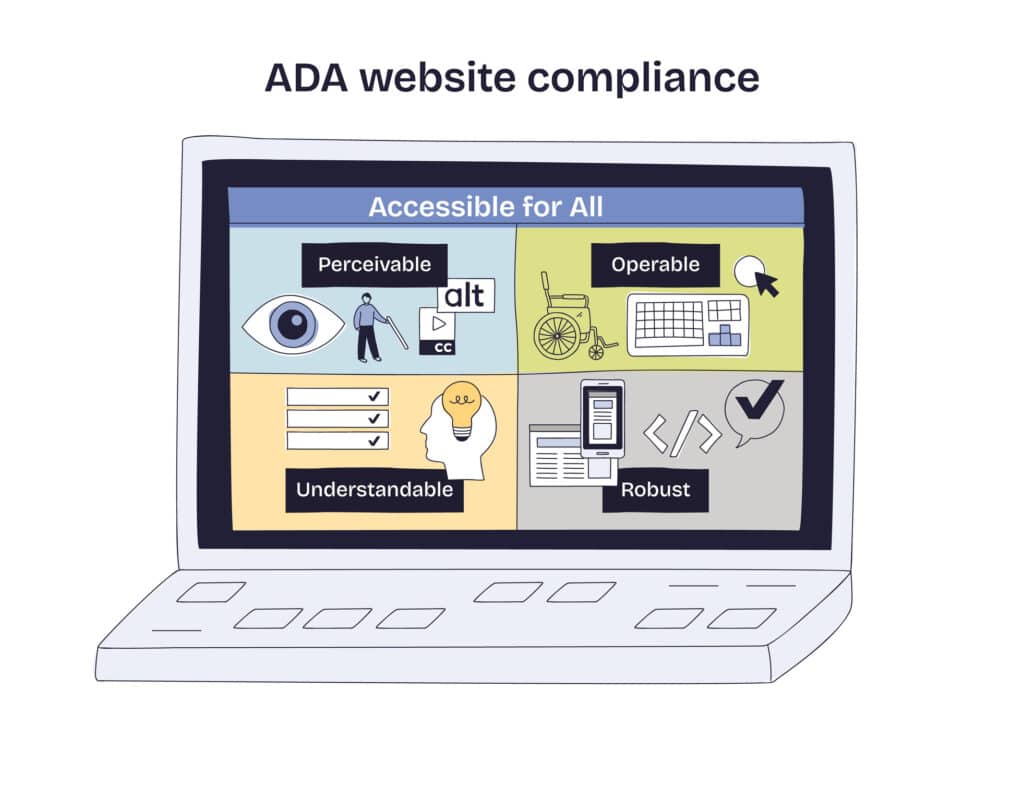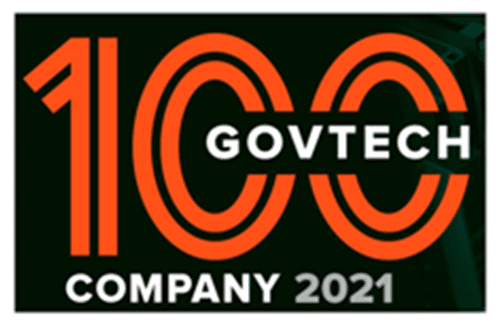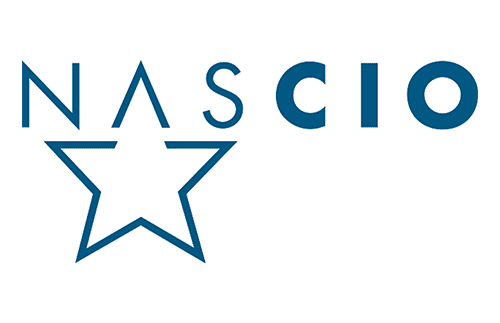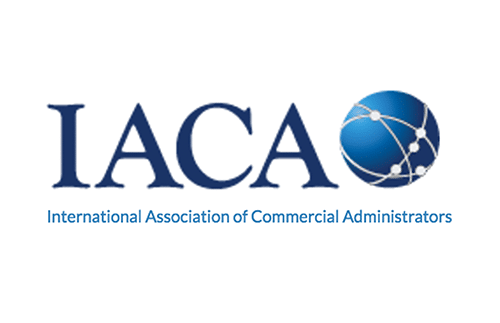The Department of Justice (DOJ) recently issued 28 CFR Part 35, the final rule for digital accessibility compliance. It offers detailed guidelines on how state and local governments can meet ADA standards, along with deadlines for compliance. States and large municipalities must fulfill the requirements within two years, while smaller municipalities and tribal governments have three years.
The rule creates a greater sense of urgency for agencies to put public services in reach of all citizens and gives teeth to Web Content Accessibility Guidelines (WCAG), the benchmark for digital property user experience in government. Version 2.1 of WCAG’s Level AA standard is now a requirement “for making accessible the services, programs, and activities offered by state and local government entities to the public through the web and mobile applications.”1
Looking at accessibility standards through the lens of compliance is lighting a fire under public entities.
Why Is Digital Accessibility Important?
Digital accessibility facilitates the effective delivery of citizen services. Without the ability to submit requests, citizens cannot access a wide range of programs. These services include public benefits, assistive services, access to community programs, or simply looking for information.
Unfortunately, slow adoption of technology in the public sector has prevented citizens with disabilities from taking advantage of the government services to which they are entitled. Even after years of emphasis on digital accessibility, agencies continue to leave themselves open to lawsuits and investigations due to non-conformance with the Americans with Disabilities Act (ADA) and Section 508 of the Rehabilitation Act of 1973.
As a result, the DOJ has brought enforcement actions against government entities, and other federal agencies have the authority to do so as well. In fact, lawsuits by citizens and organizations have proliferated. Without remediation, it can be assumed that scrutiny will only increase after the 28 CFR Part 35 compliance deadline.
A few examples of recent findings include:
- Voter Accessibility (June 2024): The Department of Justice issued a letter of findings that Alaska violated Title II of the ADA by denying voters with disabilities an equal opportunity to participate in the voting process, in part by maintaining an inaccessible elections website.
- SMI Segregation (May 14, 2024): The United States sent a letter of findings to the State of Nebraska for unnecessarily segregating people with serious mental illness (SMI), which is in violation of Title II of the ADA. A DOJ investigation concluded that Nebraska’s Behavioral Health System fails to provide its citizens with SMI with knowledge and access to the state’s covered services in the community, increasing institutionalization and restricting pathways to employment and independence.
Leverage Grant Opportunities to Support ADA Accessibility
Bringing digital foundations up to code by tech standards—in 24 or 36 months—means prioritizing additional resources against competing initiatives (AI, cybersecurity, and others). Governments are constrained in budget and resources, but taking advantage of grant funding can significantly offset the initial costs to build.
The federal government is helping support the accessibility mission with the Digital Equity Act. Commencing in 2021, the NTIA was tasked with distributing $2.75 billion to states, territories, and native populations to build out their digital infrastructures. The objective of the act is to make digital services available to “fully equip individuals and communities with the skills and tools needed for full participation in society and the economy.” While broadband access was a large part of the grant, internet access to government services has become a logical next step.
The Digital Equity Act consists of three programs: 1) the Planning Grant (expired), 2) the Capacity Grant, (expiring in September 2024), and 3) the Competitive Grant. Under the Competitive Grant Program, an additional $1.25 billion will be available in 2024. The Digital Equity Act will cover initiatives that foster “online accessibility and inclusivity of public resources and services,” among other digital equity mandates. Making websites and mobile devices accessible for people living with visual, auditory, and movement impairment falls squarely under this umbrella.
State, municipal, and tribal entities can submit Competitive Grant requests aligned with 28 CFR Part 35 objectives outlined by NTIA. With a comprehensive and detailed application, governments may be able to access funding to help offset the costs of projects that expand digital access to online resources, including accessibility compliance.
Establish a Leadership Role
In addition to the right technology, accessibility compliance requires strong management. Therefore, a 508 Program Manager with the right core competencies is recommended to lead compliance efforts. In fact, the same accessibility best practices recommended by the GSA are a solid foundational model for use by any state, municipal, or tribal government.
In addition, the DOJ favors hiring an ADA Coordinator devoted specifically to web accessibility, similar to the requirement in the existing title II regulation at § 35.107(a). In fact, the ADA Coordinator can dually fulfill the functions of a 508 Program Manager. However, it is not required.
Automate Now for 28 CFR Part 35 Compliance
Even with adequate budget and resources, time is limited for complying with the final rule deadline. Fortunately, digital workflows that streamline accessibility can be implemented rapidly and successfully when designed and deployed efficiently.
One of the most important things regulatory reviewers look for is a well-defined plan for digital accessibility. Therefore, it is highly recommended to start gathering requirements and laying out this plan now. Most important, it will start your journey, as well as provide evidence that your team is proactively addressing public needs. From a regulatory standpoint, if it isn’t documented, it didn’t happen.
When evaluating solutions and vendor partners, consider the following:
Configuration vs. Customization: Process automation does not have to require heavy custom code. While many workflows use advanced functionality, those functions can be added into a robust low-code / no-code platform. As a general measurement, 80 percent of processes can be built using drag-and-drop functionality, and 20 percent will require some measure of development (a take on the 80/20 rule).
Platforms vs. Point Solutions: The ability of a single platform to create unlimited ADA-compliant forms and workflows builds an economy of scale that can be leveraged state- or municipality-wide. Alternatively, point solutions work well within the operational processes they were originally designed to automate. Thus, it would behoove agencies to look for the flexibility to create forms and workflows for processes that span operational divisions. For example, a citizen request for services can begin with a standard form and workflow, which can be easily modified for different services (e.g., education programs, specialized transportation, and in-home supportive services).
Platform Features and Functionality: Accessibility leaders should create a list of the software features and tools they need in order to roll out accessibility in the most efficient and effective way. This can include form functionality, system integration requirements, built-in document automation, or a native eSignature solution.
Integrations: Often, entities will buy multiple solutions (eSignature, forms, workflows, etc.) that have a lower overall cost, only to eventually exceed allotted time and budget trying to connect them successfully. Furthermore, consider the additional internal and external applications that will be integrated for data utilization. This can include CRM, payment processing, and legacy databases, among many others.
Sustainability: Ensure your platform of choice will provide sustainable, secure, and scalable operations throughout the product lifecycle. In addition, consider your solution’s costs to support and maintain in subsequent years.
Digital, Human-Centered Service Is the New Government Normal
Automation is a critical enabler of disabled persons’ access to services. As public entities are facing these challenges, remember that modernization is more than an opportunity to reach citizens with disabilities. From the highest level, it is a methodology to provide service more efficiently, improve internal operations, and reduce operating costs.
For example, something as ubiquitous in the private sector as digital forms become a critical communication element. While the ADA is not new, its evolution demands that accessibility become a critical initiative. Unfortunately, there will always be conflicting priorities (e.g., cybersecurity and AI). However, an opportunity to automate effectively rewards time back to focus on value-driven tasks, which delivers measurable return on investment.
The importance of flexible form and workflow functionality cannot be overstated when it comes to complying with WCAG’s accessibility guidelines around font size, styling, color scheme and contrasts, alternative images, descriptive text, and other details.
Learn more about accessible form design for ADA compliance >>
Compliance Results in Better Service for Disabled Citizens
28 CFR Part 35 requires state and local governments to implement features and functionality to make all digital interactions available to citizens with disabilities. Automating repetitive tasks minimizes errors, increases efficiency, and responds to user needs, which in turn benefits everyone. The clock is ticking for agencies to achieve ADA-compliant websites and mobile device–ready services. Temptation to buy and implement a patchwork of low-priced solutions to make information and services accessible is counterproductive. Implementation should be done with strategic vision and a focus on the future, as workflow management is now an integral part of the digital automation landscape.levera














